en-dive and on-deev
current fixation
Hello! I’ve been on an endive and chicories kick. I don't feel too embarrassed admitting that they are new favorites after learning that radicchio's history is relatively short, with almost all currently available varieties having been developed in the last 100 years, and with good quality seed in the US being a thing of the past decade!
Other facts I've learned recently: the California Endive Farms website is very particular in distinguishing between the pronunciation of two chicories: “curly endive” or “n-dive,” which is a frilly, field-grown variety; and “California endive” (typically called Belgian or French… it's all branding), pronounced “on-deev,” which is forced like rhubarb—the final growth occurs in the dark, contributing to the smooth oval shape and blanched color. (The forced variety also comes in the burgundy and white that you see in other chicories.)
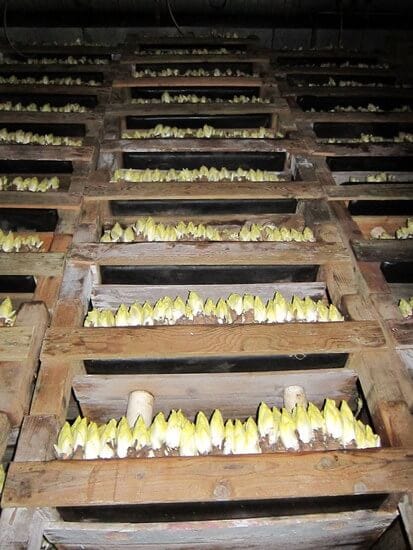
These bitter greens really feel like what my body is craving, and while I try to avoid spouting health claims over here, I’m happy to hear that they might be beneficial for anemia—I'm always looking for dietary sources to go along with my prescribed iron (molasses, sorghum syrup and offal being other favorites, although I haven't been eating the last much due to prices and exposure to carnivore diet people, who are insufferable and also take all the nicest farmer’s market offal for their dogs).
While I'm tentative about fanning a vegetable—in California Grown territory where everyone and their mother has a MOU with Israel, it's almost as poorly considered as fanning a celebrity or politician—so far chicories seem like an okay thing to get into (always checking FoodPrint to see if I'm missing something glaring). California Endive Company may be using the same influencer playbook as much of other California ag, but I haven't yet found anything terrible like the land sinking/subsidence, labor atrocities and directly funding the IDF that come along with California pistachios and almonds, for instance. Despite not quite having the personality that would invite paid endive farm tours, I am jealous of those bloggers.
Eaten this week: winter endive salad with meyer lemon vinaigrette. A subject for a future post (or please chime in here if you know more) is the seasonality of chicories. I keep reading about them as a winter crop, and in other cases as year-round. It seems that, like collards, they are sweeter with the frost—and I assume that, also like brassica, might require less pest management in the winter (for the ones that grow outside). The last time I was at Berkeley’s Monterey Market though, I saw both organic and conventional castelfranco radicchio, among many other stunning organic and local chicories—so not sure how important the winter designation is for this salad. I'd love more clarification in general when something is labeled a seasonal crop about the reason—like is it because otherwise it is getting airfreighted, or is it not that serious.
The castelfranco options at Monterey Market.
Estela’s endive salad, made unprettily and without the specific fancy cheeses/vinegars. I saw this simplified and potentially vegan version from Perry Santanachote afterwards, and it also looks great.
more eating
Baby artichokes and B’s turkey meatballs. He's been doing a lot of our staples (beans, rice, cabbage, pasta), leaving me to try out new vegetable recipes and bake.
Jane Grigson’s strawberry shortcake (I’ve always winged it with this recipe, adding way more cream and making closer to a drop biscuit than a photogenic, vertically plated shortcake—but I like starting here). Added 1/2t Burlap & Barrel cured sumac to the berries.
reading
’s “Deadly Work for High-end Poultry” — horrific news about Mary’s Chicken brand.On recipe attribution:
’s “Culinary Genealogy” and ’s “Recipes in the Age of Meme Capitalism”’s “Feasts of Fiction: Recipes from Literary Legends”’s “A Short Lexicon of Coffee Buzzwords”’s “A step-by-step guide on how Gaza's population bake bread”From 2020:
’s “On Storytelling,” Ruby Tandoh's “The Food of Care Homes,” ’s interview with , “The Case for Letting the Restaurant Industry Die.”

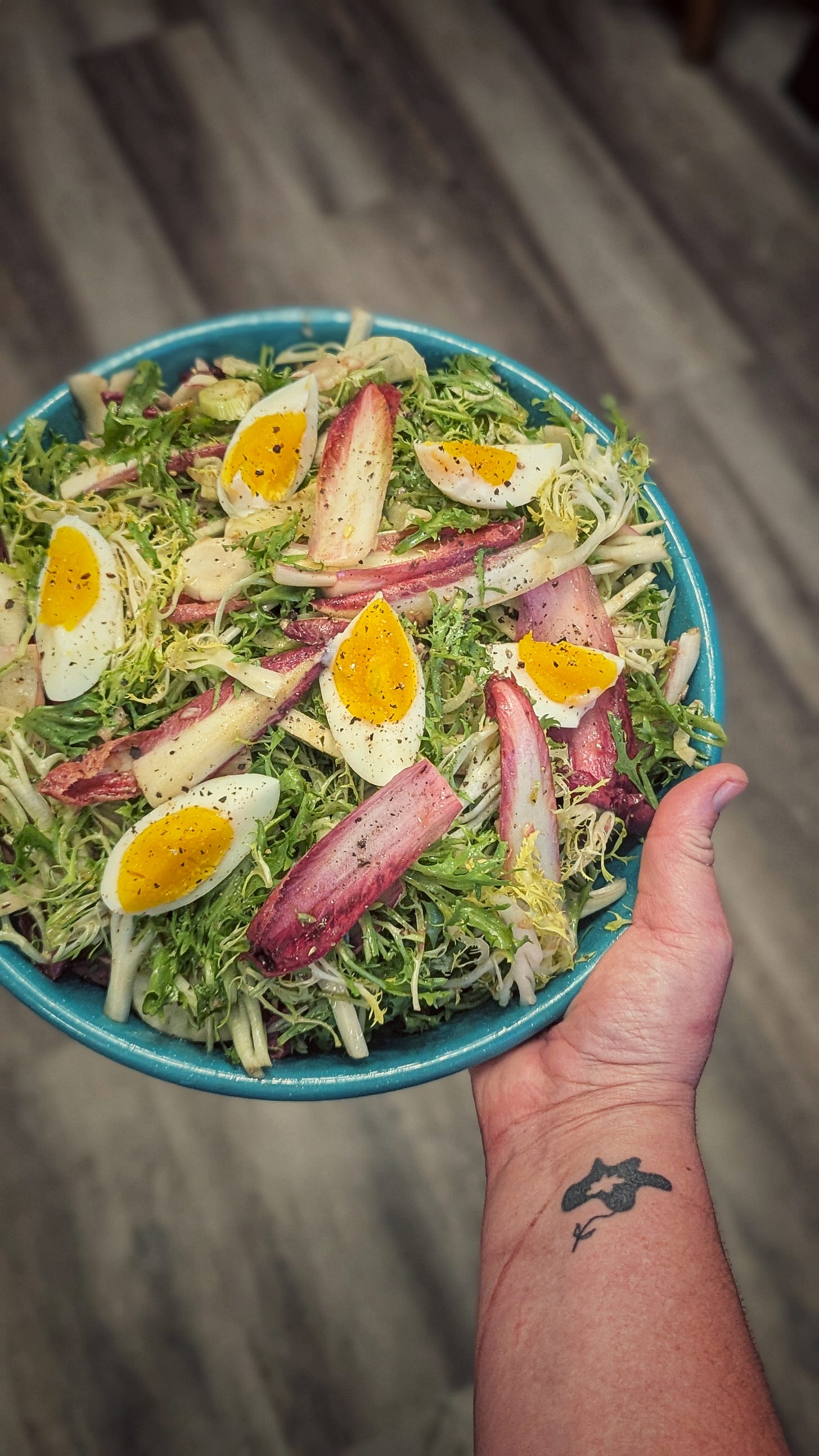
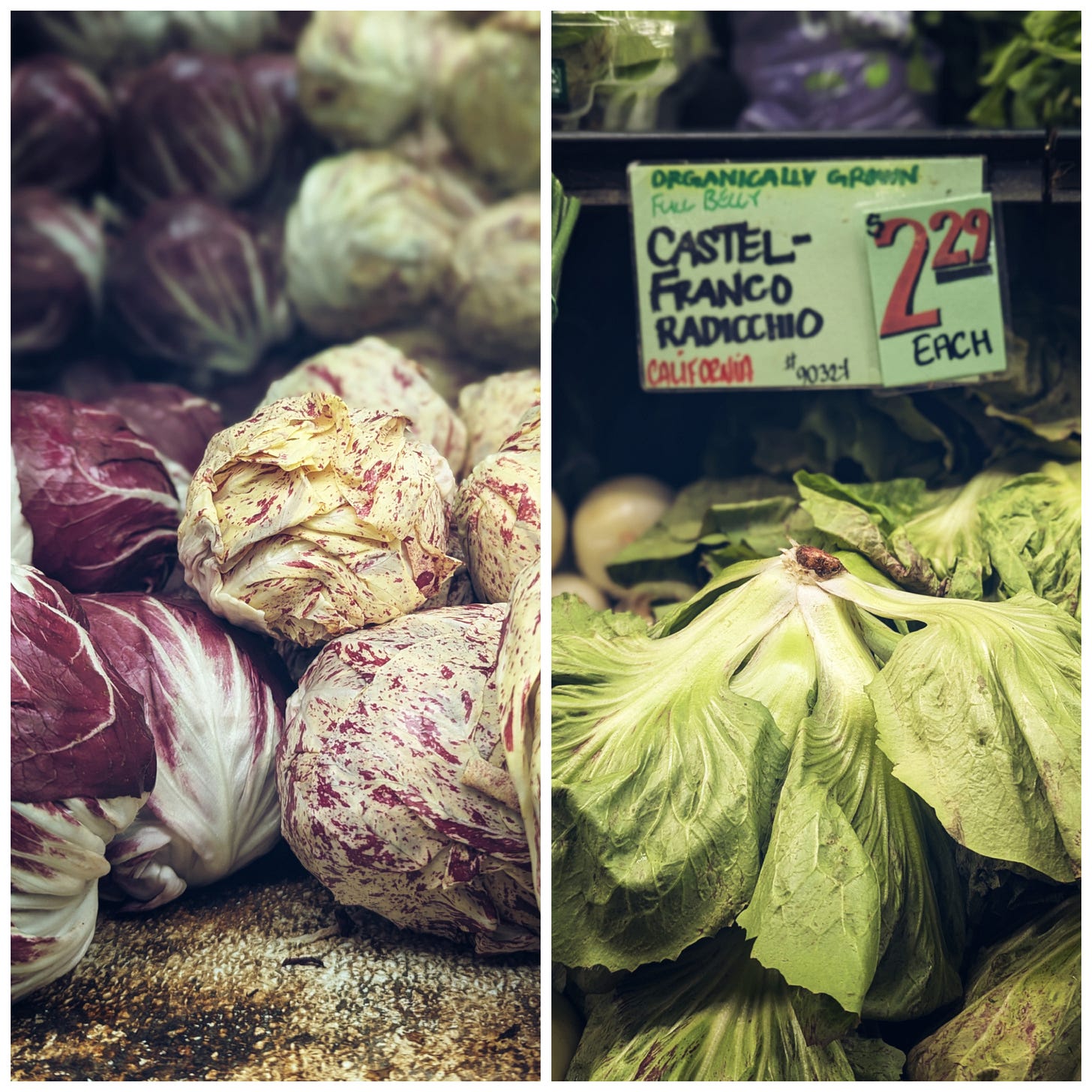
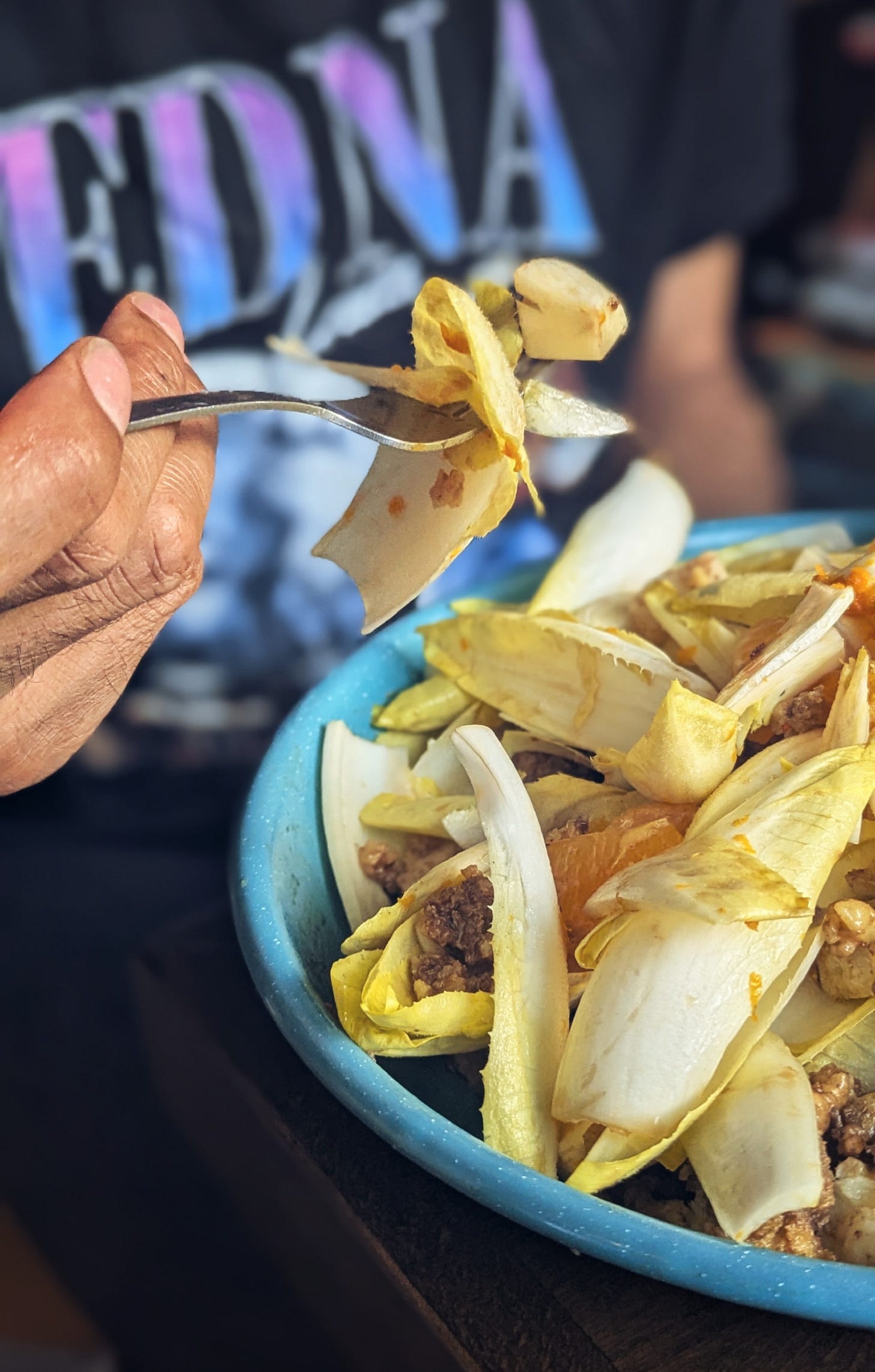
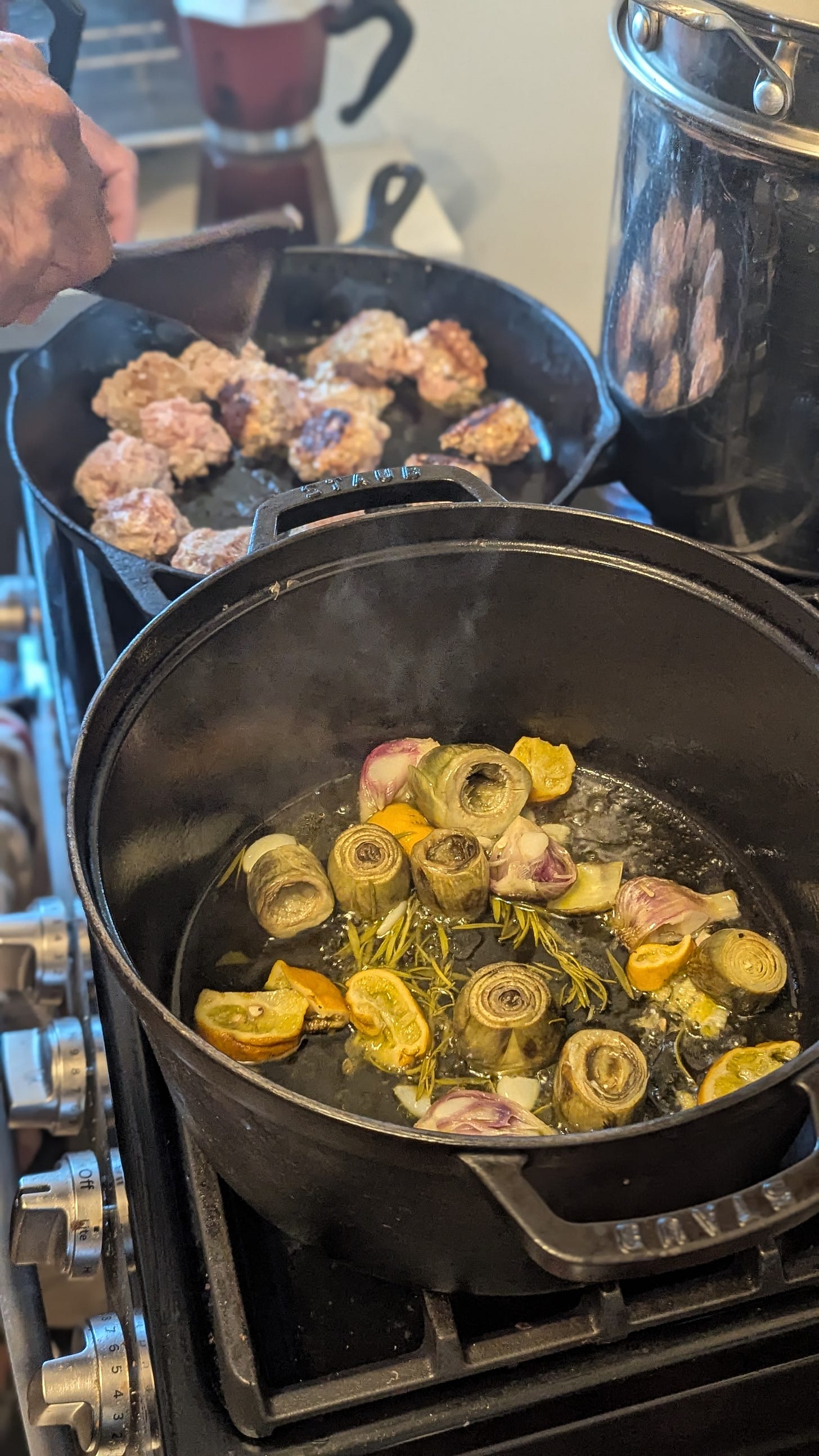
Thanks for including my piece in the readings. To know the source of the products you can use the Boycat app which will help you to boycott. I think chicory might be a winter plant as you said the closest thing we have to it here is fennel and we can only find it in the winter.